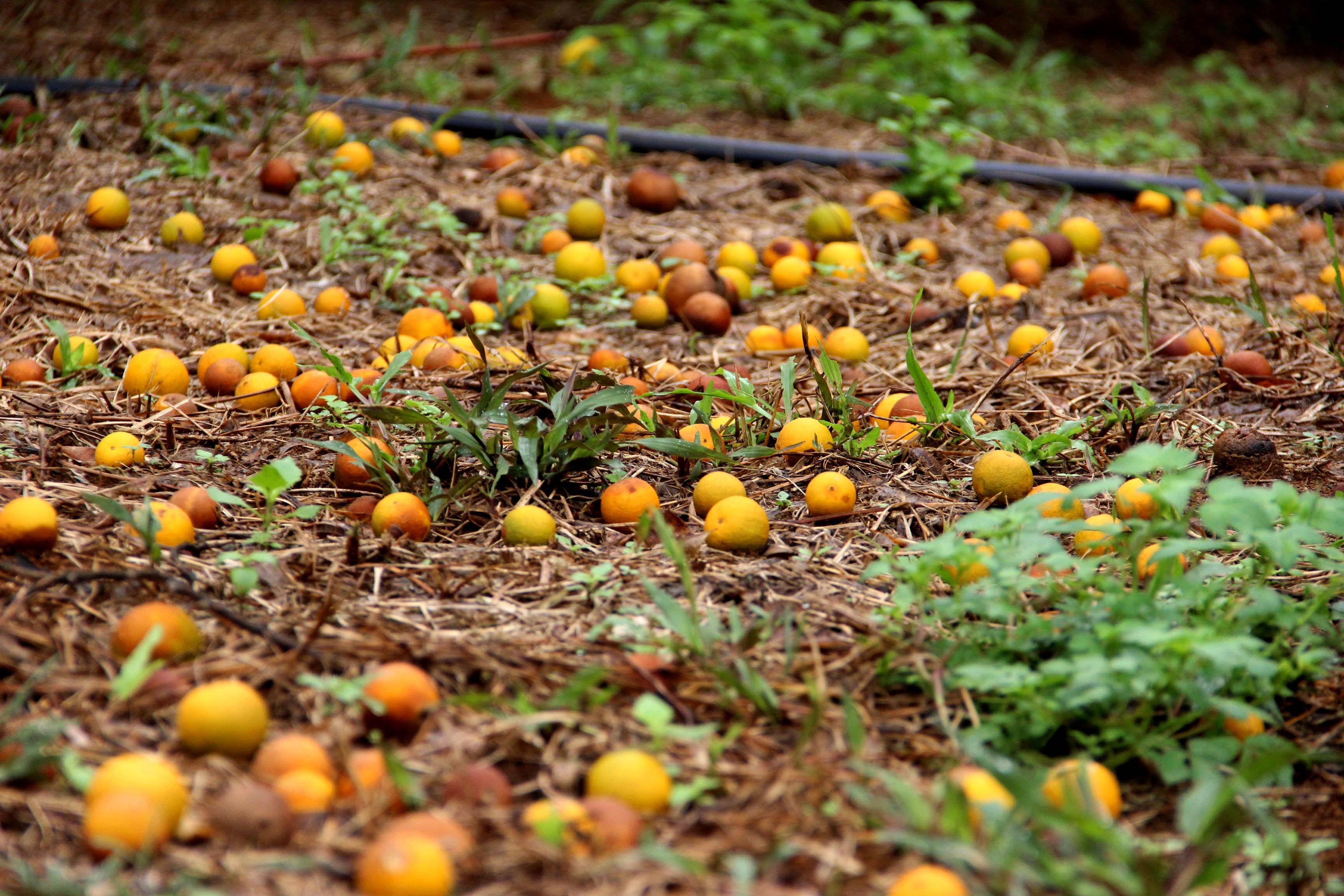Nghe An specialty orange growing area attacked by strange butterflies, fruits wilt and fall in large numbers
(Baonghean.vn) - Although harvest time is approaching, orange growers in Con Cuong district (Nghe An) are having a "headache" because they are being attacked by a strange type of butterfly, causing oranges to fall off in large numbers.
These days, Mr. Le Manh Hung in Lang Pha village, Yen Khe commune (Con Cuong) is suffering because his family's 1 hectare of oranges is about to be harvested but is attacked by a strange type of butterfly, causing the orange garden to lose fruit en masse, and the risk of crop failure is increasingly present.
 |
| Orange gardens in Con Cuong district are losing their oranges en masse due to strange butterfly attacks. Photo: Quang An |
Mr. Hung shared: "My family has 400 orange trees planted for 5 years. This year, we just harvested the first crop, but a strange type of butterfly attacked us, causing the fruit to fall in large numbers. Every night, my wife and I have to go into the garden to chase the butterflies away, but we can't keep up...".
The family of Mr. Nguyen Duc Long, Trung Yen village is no exception. Mr. Long said that for decades of growing oranges, he has never seen this strange butterfly appear. Its destructive power is very scary, because just one sting will cause the oranges to fall within a week, or even a few days.
 |
| This strange butterfly only attacks oranges at night. Photo: Quang An |
Mr. Long sadly said: I had to invest 3 million VND to pull the electricity and install lights to keep it on all night because I heard that this type of butterfly is afraid of light and only appears at night. This method also reduces the damage a little, but with such a large number of butterflies, it is impossible to completely chase them away.
Not only Mr. Hung and Mr. Long, but hundreds of orange growing households in Yen Khe commune also suffer the same situation. According to the locals, this type of butterfly appeared a few years ago, but this year's orange season, they suddenly appeared in large numbers.
In particular, they only appear from dusk to late at night, in flocks coming to sting oranges, especially juicy oranges that are about to be harvested. The next morning, they completely disappear.
 |
| Mr. Le Manh Hung in Lang Pha village, Yen Khe commune has to collect fallen oranges every day. Photo: Xuan Hoang |
It is worth mentioning that at present, people do not know what kind of butterfly this is, where it comes from, what its characteristics are, so the method to repel this butterfly is still confusing and ineffective. According to observations of garden owners, butterflies begin to appear at the time when the oranges are almost ripe and have a sweet taste.
Oranges that have been stung by butterflies have a common symptom of small holes that spread over the entire surface of the fruit, causing the fruit to turn yellow. After 7-10 days, the fruit will fall off. If it rains, the fruit will fall off faster.
 |
| The butterfly's stings will gradually spread and cause the orange to fall off. Photo: Xuan Hoang |
Yen Khe commune currently has 276 hectares of oranges, accounting for 75% of the district's orange area, concentrated in the villages of Pha, Trung Yen and Tan Huong. According to a survey, most of the oranges in all villages are attacked by this type of butterfly.
Mr. Luong Minh Quang - Agricultural Officer of Yen Khe commune said: Because of not knowing much about this strange butterfly, the prevention method of orange growers is mainly based on experience. Some households turn on electric lights to chase it away, some call on family members to use rubber bands to shoot it, others use stickers to trap it... These methods are effective but cannot completely destroy it.
 |
| People turn on electric lights at night to chase away butterflies. Photo: Quang An |
Con Cuong currently has a total of 372 hectares of oranges, of which 180 hectares are in harvest season, concentrated in Yen Khe, Bong Khe, and Chi Khe communes. The average annual orange yield is 12 tons/ha, but this year is expected to decrease compared to last year due to pests and weather.
We have received the information and have sent staff to collect samples to send to the Department of Cultivation and Plant Protection for research, to soon find an effective solution to prevent this dangerous butterfly for the people.
 |
| Graphics: Quang An |




.jpg)



